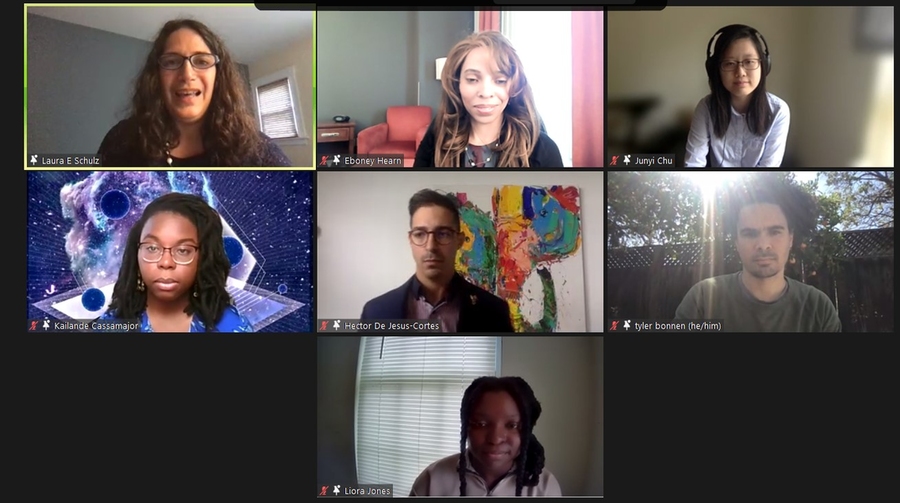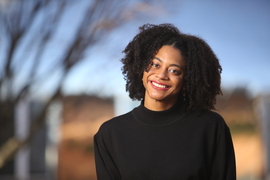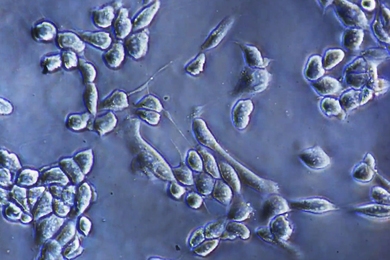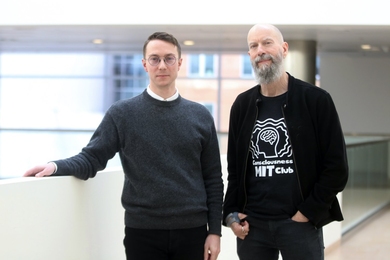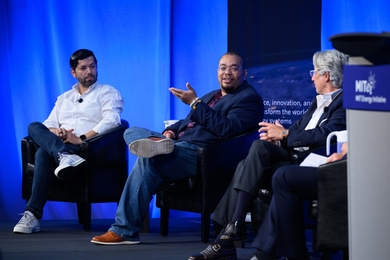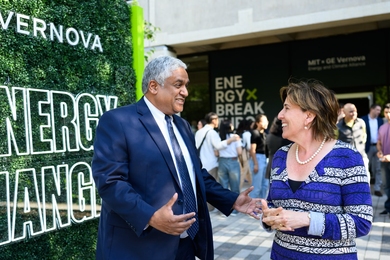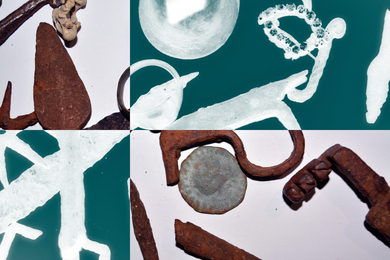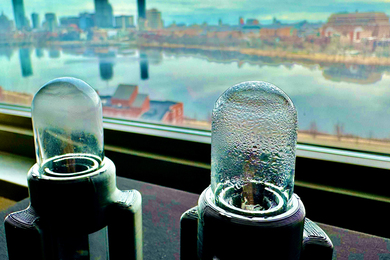A powerful series of speakers at the Picower Institute for Learning and Memory’s biennial Spring Symposium, Early Life Stress and Mental Health, blended personal stories and rigorous research to demonstrate that while remedying the lifelong toxic stress and disadvantage many people incur during childhood can be difficult, it is by no means intractable.
Picower Institute Director Li-Huei Tsai opened the symposium, co-produced with the JPB Foundation led by Barbara Picower, with the observation that while problems such as poverty, racism, injustice, and child abuse have been around for a long time, finding and implementing ways to fight the health problems that can result has become increasingly urgent.
“This feels especially so right now, as we grapple with a time in which many of us have seen young people endure historic stresses,” she said. “The many tragedies and disruptions of the Covid-19 pandemic and stark examples of racial and social injustice have made this a particularly difficult time to grow up.”
Stories of systemic stress
Educator Geoffrey Canada, founder and president of the Harlem Children’s Zone, emphasized that the current moment is especially crucial in the Black community.
“If I am right about what I suspect is going to happen in this country, I can just say for those of us who care about toxic stress we haven't seen nothing yet,” he said. “What's coming, in my opinion, is sort of unprecedented.”
Canada, who grew up in the impoverished South Bronx, New York, recounted several episodes in which generations of his family encountered racism, sometimes at the hands of police and health care providers. Many Black people have come to regard such stresses as “the price of living in America,” he said. But after observing the disproportionately terrible impacts of Covid-19 in his and other communities of color, his concern is heightened further.
“I think it's very clear in this country, your race determines largely whether you lived or died, whether you got sick, whether you ended up working at home or being on the front lines,” he said, “whether your children got an education, and whether or not you're going to have anything that looks like a recovery from this experience.”
Moreover, the murder of George Floyd and other police killings were “seared into the psyche,” adding even more to the stresses black children now face.
Lawyer Bryan Stevenson, founder of the Equal Justice Initiative, called out other harms the justice system has inflicted, particularly on women and children. But he also recommended a prescription for the nation to reconsider policies that have led to mass incarceration and prosecution of children as adults.
“Over the last 25 years, the percentage of women going to jails and prisons has increased 800 percent,” he said. “Eighty percent of the women that we put in our jails and prisons are single parents with minor children, which means that the lives of a generation of children are being disrupted by these carceral policies.”
Moreover, in a country where one-in-three Black and one-in-six Latino boys are projected to be in prison during their lives, Stevenson said that when he sits down with preteens in poor communities, “they’ll say things that break my heart. I’ve talked to too many children who tell me that they expect to be in jail.”
He called for more people to get “proximate” to families struggling with poverty, addiction, and other difficulties because proximity promotes understanding and empathy and provides an opportunity to provide the affirmation, care, safety, and opportunity that children growing up among violence need. Proximity, for instance, can help undo the discredited but persistent narrative that juveniles accused of crimes are somehow “super predators” and not still children. It can combat the politics of fear and anger, he said, that led the country to treat addiction disorders through the legal system rather than as a health care problem. And it can dispel, he said, a sense in America, lingering since slavery and the genocide of Indigenous Americans, of a racial hierarchy.
Jose Antonio Vargas put a similar emphasis on inspiring empathy through storytelling. The organization he founded, Define American, is a culture change organization that uses the power of narrative to humanize conversations about immigrants. Vargas, who came to the United States from the Philippines as a child, discovered his undocumented status when he was a teenager. As difficult as living undocumented can be under typical circumstances — he drew a parallel between limitations on travel many felt during the Covid pandemic with the restrictions undocumented people consistently face — becoming a public advocate amid intense policy debate can add to that stress.
Define American has therefore spearheaded research with the University of Massachusetts at Amherst, funded by the National Geographic Society, to survey immigration advocates for signs of post-traumatic stress disorder, stress, depression, and other signs of mental health troubles, as well as resilience. Full results, he said, will be published this summer, but reflect high rates of both trauma and resilience.
Science begets solutions
Several symposium speakers emphasized that much as personal stories and proximity can aid reveal the roots of toxic stress, scientific data and research can also lead to remedies by discovering the mechanisms that underlie health problems.
Picower Institute neuroscientist Gloria Choi, associate professor in the MIT Department of Brain and Cognitive Sciences (BCS), for example, shared her research tracing a long-observed but never explained link between pregnant women getting sick from infection and the emergence of autism-like symptoms in their children. Her research in mouse models showed that when specific bacteria are in the gut microbiome of pregnant dams, infection during a specific time of pregnancy stimulates the release of cytokine molecules from immune cells. Those cytokines reach neurons in the S1DZ region of the cortex of the fetus, disrupting the development of inhibitory neurons. That in turn leads to hyperactivity of circuits governing social behaviors, causing the autism-like neurodevelopmental disorder.
By achieving this kind of detailed, causal understanding, Choi said, scientists pinpoint targets for therapeutic interventions.
“We scientists, to be able to help children, I think we need to understand at mechanistic levels as to how mother's health can shape that of her child,” she said.
At a population level, as well, extracting cause and effect from data can help guide public health and policy remedies, said social epidemiologist Mariana Arcaya, associate professor in MIT’s Department of Urban Studies and Planning. She made the case that while many researchers have shown that neighborhood characteristics such as poverty and violence can undermine health, fewer have studied what may be an equally important link — existing health conditions can make it harder for families to move. Appreciating this bidirectional relationship between health and geography should not be overlooked in devising interventions, she said. Her research has helped to document it.
“If poor health is a factor that is going to limit socioeconomic and geographic mobility, and we know that there's huge baseline disparities in health in the United States,” Arcaya said, “then we really need to be concerned about the co-production of health and neighborhood and housing conditions and how some families may be in a kind of cyclical disadvantage for both health outcomes and socioeconomic and neighborhood outcomes.”
As the first surgeon general of the State of California, physician Nadine Burke Harris has galvanized a science-based statewide response to the public health crisis of adverse childhood experiences (ACEs), such as abuse, neglect, or disruptions in home life. More than 60 percent of adults have experienced at least one ACE and 15.8 percent have experienced four or more. Research shows that ACEs accumulate to raise the risk of serious health problems, including Alzheimer’s disease and suicide. In all, ACE-related health problems, she said, add $112.5 billion to annual health-care costs in California and more than $1 trillion across North America and Europe as a whole. On top of those, poverty and racism are also risk factors for future health difficulties.
“Over the last several decades we’ve begun to explore the biological mechanisms for how this happens,” she said. “We’ve heard that trauma, especially in childhood, is damaging to our physical health, our mental health, but now we want to understand why, because when we understand the mechanism, that gives us tools to be able to unpack this.”
In affected people, she said, ACEs trigger toxic stress — an abnormally sustained stress hormone and immune system response — as well as epigenetic changes that alter expression of genes. These factors, many of which act directly on the brain, lead to health risks. They can be mitigated, however, by providing safe, stable, and nurturing relationships and environments, as well as with stress management and medication.
So California has launched programs that have trained more than 17,000 primary care providers to screen more than 300,000 patients for ACEs and toxic stress risk. From there, doctors can help families with strategies to better manage the response. Moreover, the state has invested more than $30 million this year in grants covering 27 counties to link medical, social, educational, and community service providers together in “trauma-informed networks of care” that support families more broadly.
Extending opportunities
In a panel discussion moderated by Laura Schulz, a professor in BCS and the department’s associate head for Diversity, Equity Inclusion and Justice Initiatives, the symposium also highlighted another dimension of harmful inequity that prevents people from reaching their full potential: the lack of diversity in science, technology, engineering, and mathematics, or “STEM.” Mirroring the focus other speakers put on seeking solutions, the panel featured people at MIT who are working to improve diversity in STEM, and participants in some of those programs who described what involvement has meant for them.
Picower Institute postdoc Héctor De Jesús-Cortés, a member of Picower Professor Mark Bear’s lab, for example, described how his participation as a student in Puerto Rico in the NIH-funded Minority Access for Research Careers program enabled him to do full-time research and to launch his scientific career. That and other opportunities inspired him to co-found the Sagrado MIT Neuroscience Pre-College Program, which helps high school students all over Puerto Rico to gain more exposure to science and knowledge about science careers. Of the 11 juniors who participated last year, many are now headed for colleges such as Stanford University, Yale University, Emory University, Cornell University, and Georgia Tech, he said.
The MIT Office of Engineering Outreach’s three programs are currently serving about 365 high-achieving pre-college students from underrepresented groups and disadvantaged backgrounds. In all, OEOP has served more than 5,000 students, said Executive Director Eboney Hearn. About 80 percent have gone on to earn at least bachelor’s degrees in STEM fields, she said, including many at MIT.
“Our alumni tell us that our programs have helped to level the playing field and helped them to get to places in their academic and personal journeys that didn’t seem possible,” she said.
Schulz’s lab has been an active locus within BCS for inspiring and mentoring students at various stages. Graduate student Junyi Chu, for instance, described how last year she helped to launch the lab’s high school internship program, in partnership with Somerville High School and Black Girls Code. The lab has already engaged 17 students in the lab’s work studying cognition in babies. Interns also learn about science careers and publishing.
Panelist Liora Jones, from Torrington, Connecticut, was a Schulz lab intern. She just graduated high school and will study cognitive science at Wellesley College in the fall. Inspired by the fields of human-computer interaction, psychology, and artificial intelligence, she said she saw the internship as a way to learn more about cognition and to gain research skills. She did, and in the process met a mentor, new friends, and attended her first research conference.
Chu has also mentored college students in the MIT Summer Research Program. Among them is Kailande Cassamajor, who just graduated from Howard University with a degree in biology and psychology, and will attend a master’s program in data science at Columbia University in the fall. Cassamajor said she enjoyed the chance to meet fellow MSRP students from other schools as well as to work with graduate students, like Junyi, who exposed her to cognitive and computational neuroscience. She greatly expanded her experience using a new programming language, for example.
In his remarks, panelist Tyler Bonnen provided vivid, personal representation of many of the themes of the day. Now a fifth-year neuroscience graduate student at Stanford, he described his adolescence in Miami Dade County, Florida, as “mired within the criminal justice system: rehabs, hospitals, jail cells, psych wards, detention centers.” But he had a “good judge” and was lucky enough to be picked for a study in which he and his family were helped. He got out of the institutions in which he was being harmed, he said, did social justice work, and then found his way to community college, where he encountered a program that would finance his education if he would study science.
After earning a degree at Columbia, he studied at MIT as a BCS postbaccalaureate scholar with Schulz and Professor Rebecca Saxe. Now he’s dedicating his multidisciplinary research to studying how memory works, with the goal of better understanding trauma and helping people overcome it. He’s bringing his stories and science together to help others overcome acute stresses of their own.
